July 30 – August 29, 2014
Field Report
In August, Planet Drum hosted several educational workshops at the greenhouse with students from the Fanny de Baird School in Bahia and the Padre Jorge Paladines High School in San Vicente. The visiting students were given a brief lecture on the main features of the dry forest bioregion and a tour of the greenhouse. Afterwards, they participated in the revegetation process by assisting in transplanting seedlings into reutilized plastic bottles. Before going home, each student was offered a tree or two to take with them.
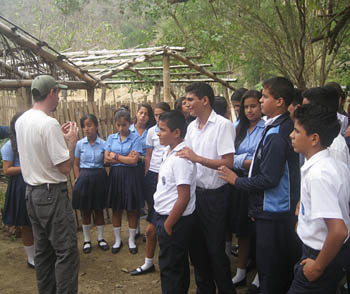
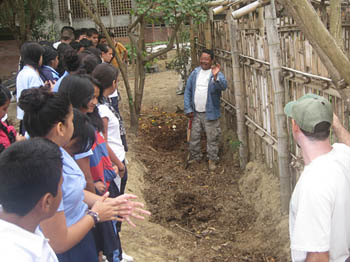
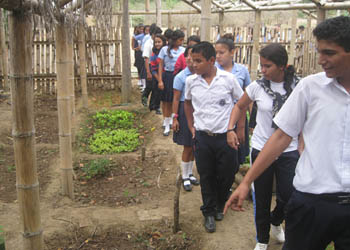
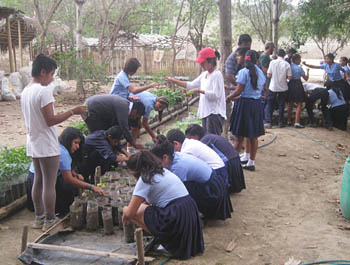
Nearly all of the students who visit thoroughly enjoy the experience. Many ask questions such as: Which trees are native and non-native? How long do certain trees take to produce fruit? And, when can they return to help out some more?

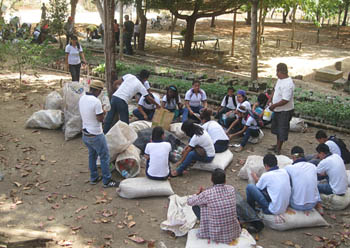

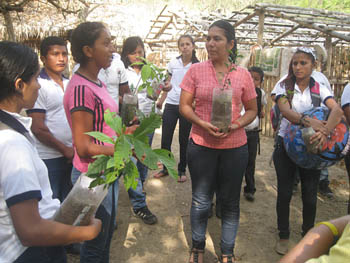
In order to hold such frequent workshops, many different materials and preparations are needed. Seeds and seedlings are needed so that students have something to transplant while at the greenhouse. Both of these are collected in the field, which requires finding, collecting, and preparing them. Most seeds are planted directly in the seedbeds for germination. Others are stored for later. Several vendors at the market now assist in collecting damaged fruits for us to retrieve the seeds from.
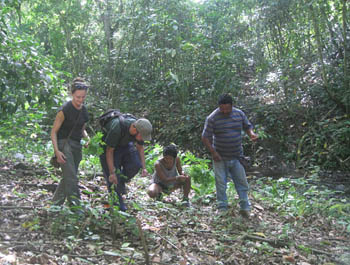


Soil must be prepared for the seedbeds and for transplanting the seedlings. Each workshop uses a large pile of soil that gets filled into the plastic bottles. One of the main ingredients of the soil mix is finished compost. The compost pile must be constantly fed food scraps, which are collected from the house, our neighbors, and at the market. The other ingredient for compost is saw dust. Since the compost production has been dramatically increased recently, the need for sawdust has gone up proportionally. An entire morning was dedicated to acquiring sawdust from a local saw mill.
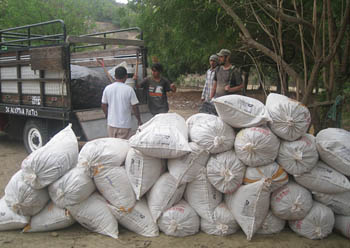
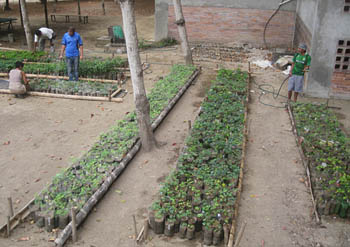
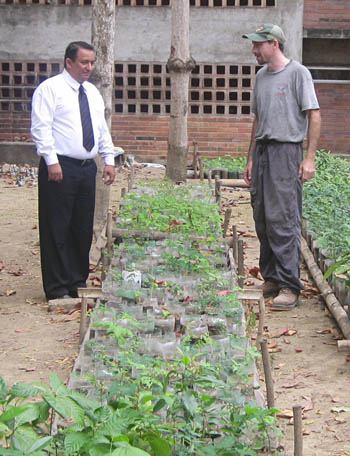
In addition to hosting workshops at the greenhouse, Planet Drum also partook in an open house held at the Universidad Catolica (where the greenhouse is located). Many students visited our table and several groups received in depth presentations on the revegetation project. We even used the event to donate trees directly to interested visitors.


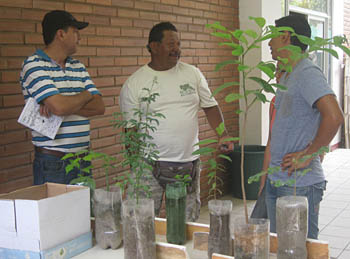
The quantity of trees at the greenhouse is growing rapidly and we are organizing, maintaining, and expanding it accordingly. Watering all of the plants at the greenhouse now takes one person most of the morning. We are also repairing and expanding greenhouse infrastructure to accommodate the increased tree production – more on this next time.

Pásalo bien,
Clay

Your point of view caught my eye and was very interesting. Thanks. I have a question for you.
Can you be more specific about the content of your article? After reading it, I still have some doubts. Hope you can help me.
Your point of view caught my eye and was very interesting. Thanks. I have a question for you.